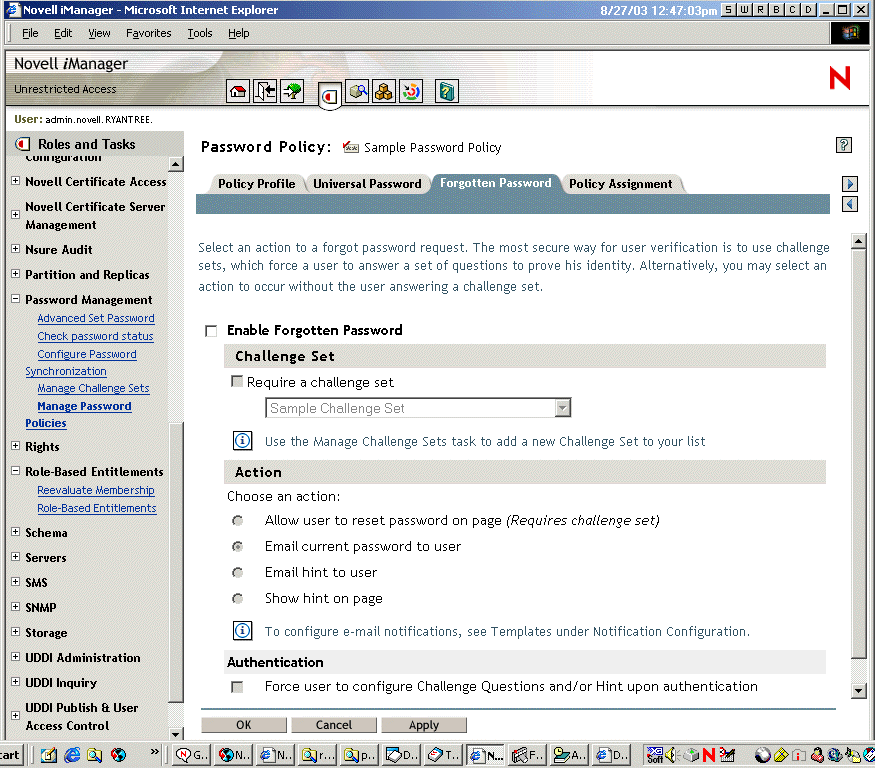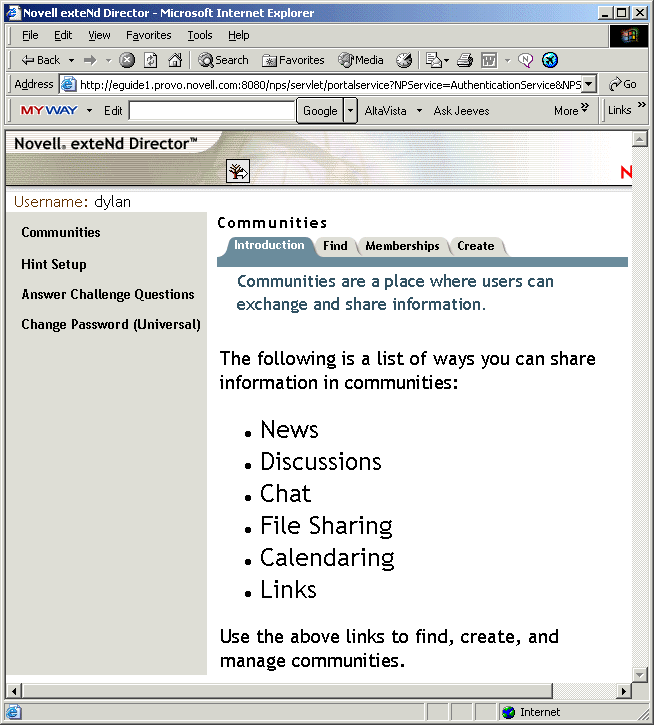Overview of Self-Service Features
Password Policies include Forgotten Password Self-Service, to reduce help desk calls for forgotten passwords, and Reset Password Self-Service, which lets users change their passwords while viewing the rules the administrator has specified in the Password Policy. Users access these features through the iManager self-service console.
Most features of password management require Universal Password to be enabled. Ideally, you would also integrate the iManager self-service console into your existing company portal, to give users easy access to Forgotten Password Self-Service and Reset Password Self-service.
The new Password Self-Service features let you do the following:
- Providing Users with Forgotten Password Self-Service
- Providing Users with Reset Password Self-Service
Providing Users with Forgotten Password Self-Service
Using a Password Policy, you can provide users with the ability to recover from a forgotten password without contacting the help desk. The "Forgot your password?" link is available when users log in to the iManager self-service console.
The Forgotten Password Self-Service features include the following:
- Challenge Sets, to let user answer questions to prove identity
- Ability to e-mail a password hint or the forgotten password to the user
- Ability to let user reset a password in the browser during a forgotten password request
To see examples of what the user will experience using the "Forgot your password?" link, see Providing End Users with Forgotten Password Self-Service.
The following figure shows an example of the property page where you specify Forgotten Password settings for a Password Policy.

Providing Users with Reset Password Self-Service
Using the iManager self-service console, users can reset their passwords while viewing the Advanced Password Rules. They do this using the Change Password (Universal) gadget.
Here's an example of the screen they see when they log in to the iManager self-service console on your iManager web server, using a URL like https://www.servername.com/nps.

To see examples of what the user will experience using the Change Password (Universal) link, see Providing End Users with Password Reset Self-Service.